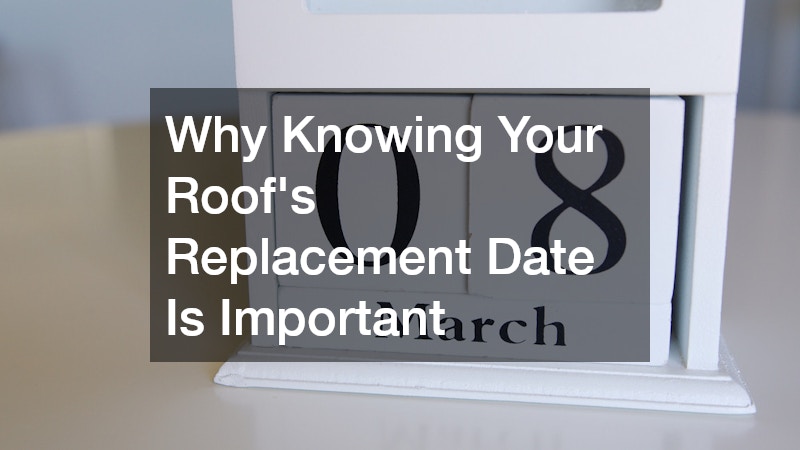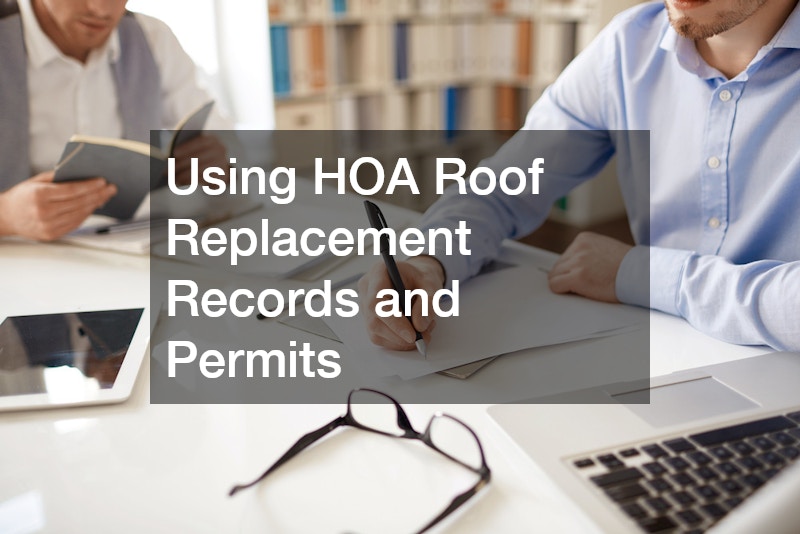If you’ve been wondering, “How can I find out when my roof was replaced?” this guide is for you. Your residential roofing is one of the most important elements of your home. It shields you, your family, and your belongings from the elements. But unlike other parts of your home, your roof is easy to forget about until there’s a problem. That’s why it’s crucial to know when your roof was last replaced.
Knowing the age of your roof helps you stay on top of maintenance, plan for future expenses, and even comply with insurance or HOA roof replacement guidelines. Without this knowledge, you could be caught off guard by leaks, structural damage, or denied claims.
So how do you figure it out? This guide explores a variety of methods — from digging through documents and talking to previous homeowners, to consulting roofing contractors, roofing companies, and local roofers, and even leveraging online tools. We’ll also cover unique situations like coordinating with extermination services and understanding the care of a wind vented roof.
By the end, you’ll have a clear roadmap to uncover your roof’s history, make informed decisions about roof repair or roof replacement services, and keep your residential roofing in peak condition.
1. Why Knowing Your Roof’s Replacement Date Is Important

Many homeowners ask: “How can I find out when my roof was replaced?” so they can take better care of it. Knowing the date helps you extend its lifespan, plan for replacement, and meet insurance or HOA requirements.
1.1 Extending the Lifespan of Your Roof
Every type of residential roofing has an expected lifespan, but regular upkeep can make it last longer. When you know how old your roof is, you can prioritize maintenance tasks like cleaning gutters, replacing flashing, and fixing minor damage, which helps prevent premature deterioration. Roofing contractors and roofing companies often recommend inspections at specific intervals based on the roof’s age and materials.
1.2 Preparing for Future Residential Roofing Replacements
Replacing a roof is a significant investment. If you know when it was last replaced, you can plan ahead, save up, and request roofing estimates from multiple roofing companies and local roofers before you’re in a pinch. Knowing the timeline also lets you explore different roof replacement services and even upgrade to more durable materials when the time comes.
1.3 Ensuring Homeowner Insurance Compliance
Many insurers won’t fully cover roofs over a certain age, sometimes as young as 20 years, or may deny claims if the roof is in poor condition due to neglect. Similarly, some HOAs enforce periodic HOA roof replacement schedules. Being able to document the age of your residential roofing ensures you meet these obligations.
2. Examining Existing Homeowner Documents
A logical place to start when wondering, “How can I find out when my roof was replaced?” is by digging into your own paperwork — purchase documents, home improvement receipts, and warranties often hold the answer.
2.1 Reviewing Purchase Paperwork
Start by pulling out your closing documents from when you bought the house. Inspection reports, appraisals, and disclosures often list the roof’s age or condition at the time of sale. These reports may even include recommendations for roof repair or replacement. If you can’t find the paperwork, your real estate agent or attorney may have copies.
2.2 Scouring Home Improvement Records
If you or a previous owner hired roofing contractors, roofing companies, or local roofers, there may be receipts, invoices, or permits in your home improvement files. Look for contractor names, dates of service, and descriptions of work performed. These records help establish not just the installation date, but also any interim roof repair or maintenance.
2.3 Checking for Warranty Details
Roof warranties can be issued by both the manufacturer and the installer. These documents almost always list the installation date and can confirm what materials were used. If the warranty includes contact info for the roofing contractor or roofing company, you can follow up with them directly.
3. Consulting With Your Real Estate Agent
Still asking yourself, “How can I find out when my roof was replaced?” Your real estate agent might have helpful records, disclosures, or contacts to track down the information for you.
3.1 Gathering Information from Their Records
If you’re coming up short, contact the real estate agent who helped you buy the house. Agents sometimes keep notes on significant repairs or renovations, including residential roofing details.
3.2 Inquiring About Broker Disclosures
Depending on your state, brokers may be required to disclose the age of the roof and any known issues at the time of sale. Even if it wasn’t spelled out, they may still have emails or forms mentioning the roof’s history.
3.3 Seeking Assistance With Follow-ups
Your agent can also help you contact the seller’s agent or previous homeowner, and might even recommend trustworthy roofing companies, roofing contractors, or local roofers to assess the roof and provide updated roofing estimates.
4. Contacting the Previous Homeowner

If you’re stuck on, “How can I find out when my roof was replaced?” sometimes the simplest way is to contact the last homeowner directly — they may have records or at least a good memory of the work.
4.1 Tracing Ownership History
County property records, tax assessor databases, or your agent can help you find out who owned the house before you. Once you have a name, try reaching out with a polite letter, email, or even a quick phone call if contact info is available.
4.2 Preparing Questions to Ask
Be clear and specific: ask if they replaced the residential roofing, when it was done, what materials were used, and which roofing contractor, roofing company, or local roofers handled the job.
4.3 Establishing a Connection
Some homeowners keep detailed records and may be happy to share receipts, photos, or even advice about ongoing maintenance. This is also a good opportunity to ask if they had any issues with pests and whether they coordinated with extermination services before or after the roof work.
5. Hiring a Professional Roof Inspector
When you’re left wondering, “How can I find out when my roof was replaced?” a professional inspector can estimate its age by evaluating the materials and current condition.
5.1 Assessing Roof Condition
If records aren’t available, a professional inspection is a smart move. Experienced roofing contractors or independent inspectors can evaluate the roof’s condition and estimate its age based on material wear and construction techniques.
5.2 Evaluating Material Age
Certain materials, like architectural shingles, cedar shakes, or metal, show age differently. A pro can identify these subtle signs and tell you how much life your residential roofing likely has left.
5.3 Obtaining a Professional Opinion
Many roofing companies and local roofers offer inspections as part of their roofing estimates, and it’s worth comparing a few opinions before making decisions about maintenance or roof replacement services.
6. Reaching Out to the Original Roofing Contractor
A great tip for, “How can I find out when my roof was replaced?” is to call the original contractor or roofing company — they may still have job records with the exact date.
6.1 Obtaining Installation Records
If you know the name of the original roofing contractor or roofing company, give them a call. Many keep detailed job records for years and can quickly tell you when your roof was installed.
6.2 Inquiring About Roof Replacement Services
This is also a great opportunity to ask about any subsequent roof repair or maintenance they may have performed on your residential roofing.
6.3 Verifying Contractor Details
Always confirm the contractor is still licensed and reputable. A long-standing relationship with a trustworthy roofing company or local roofers can be invaluable if you need ongoing maintenance or future roof replacement services.
7. Using HOA Roof Replacement Records and Permits

Another way to answer, “How can I find out when my roof was replaced?” is by checking HOA records, city permits, and building code documents — these often note the date of installation.
7.1 Accessing Local Government Archives
If your home is part of an HOA, contact the association to ask for maintenance records. Many HOAs coordinate HOA roof replacement projects on a set schedule.
7.2 Searching Online Databases
Even if you don’t have an HOA, your city or county may have an online permit database. Look up your address to see if permits were pulled for residential roofing work, and when.
7.3 Understanding Building Codes
Permits and HOA guidelines can also help you understand if past work was done to code. If you’re unsure, ask a roofing contractor or roofing company to review the records with you and advise on any necessary updates or roof repair.
8. Exploring Signs of an Older Roof
If you’re inspecting yourself and wondering, “How can I find out when my roof was replaced?” look for clues like wear, mismatched shingles, or construction styles that can help date it.
8.1 Identifying Wear and Tear
Walk around your home and look for signs like missing or curling shingles, granule loss, moss growth, or water stains. These often indicate your residential roofing is near the end of its life.
8.2 Checking for Signs of Previous Roof Repair
Look for mismatched shingles, uneven sections, or areas that look newer than others. These could point to patch jobs done by local roofers or roofing contractors.
8.3 Observing Design and Construction Style
The materials and construction methods used can offer clues about the roof’s age. For instance, certain shingle colors or fastening methods may reflect styles popular decades ago.
9. Engaging Neighbors for Community Insights
Sometimes the answer to, “How can I find out when my roof was replaced?” is right next door; longtime neighbors may remember when it happened or have shared contacts with roofing companies.
9.1 Linking With Long-term Residents
Your neighbors, especially those who’ve lived nearby for a long time, may remember when your roof was replaced or who worked on it.
9.2 Exploring Neighborhood Trends
In planned developments, many homes have residential roofing installed around the same time. Neighbors can tell you if there was a large-scale HOA roof replacement project in recent years.
9.3 Comparing Local Roofers
Neighbors often have recommendations for reliable roofing companies, roofing contractors, or local roofers, and may even share their own roofing estimates to give you a baseline.
9.4 Sharing Information and Resources
Sometimes neighbors keep business cards or contact info for roofing companies, extermination services, or inspectors they’ve used — saving you time and effort.
10. Online Tools and Mobile Apps for Tracking Roof History

For the tech-savvy, “How can I find out when my roof was replaced?” can be answered with apps, forums, and weather data tools that help piece together the timeline.
10.1 Exploring Property Management Apps
Apps like HomeZada and Centriq let you upload receipts, photos, and maintenance schedules for your residential roofing. Even if you didn’t set it up, ask the previous owner if they did. You might inherit a fully documented digital log.
10.2 Utilizing Historical Weather Data Tools
If you suspect a storm prompted roof repair or replacement, tools like NOAA’s Storm Events Database can help confirm the date. Armed with this info, you can discuss potential damage with a roofing contractor, roofing company, or local roofers and decide if a closer inspection is warranted.
10.3 Engaging in Online Homeowner Communities
Neighborhood forums, Facebook groups, or sites like Houzz and Reddit are great for gathering insights on roofing companies, comparing roofing estimates, or even finding recommended extermination services if pests have complicated your roof replacement services.
11. Coordinating With Extermination Services Before Roof Work
Even when pests are involved, you might still be asking, “How can I find out when my roof was replaced?” — and extermination services often uncover clues during their inspections.
11.1 Understanding How Pests Can Complicate Roof Replacement
Rodents, termites, and bees can damage your roof decking and insulation, making it unsafe or ineffective to proceed with roof repair or roof replacement services before addressing the problem.
11.2 Scheduling an Inspection for Infestations
Call extermination services to inspect your attic and roof area for signs of pests before hiring roofing companies or roofing contractors.
11.3 Working With Exterminators and Roofers Together
Many roofing contractors, roofing companies, and local roofers will coordinate with extermination services to ensure that the work proceeds smoothly and the structure is sound.
12. Considering Wind-Vented Roofs and How They Affect Maintenance
If you have a wind-vented system, you may wonder specifically, “How can I find out when my roof was replaced?” since these roofs have unique construction and records worth reviewing with experts.
12.1 What Is a Wind Vented Roof?
A wind vented roof is a specialized system designed to equalize air pressure during high winds, reducing the risk of uplift and damage. This type of residential roofing is especially common in hurricane-prone or coastal areas. Because of its unique construction, it requires specialized knowledge to maintain and repair, making it crucial to work with roofing contractors or roofing companies who are experienced with this design.
12.2 How to Identify If You Have One
Not all homeowners realize they have a wind vented roof, which can make it harder to trace its history. A knowledgeable roofing contractor or local roofers can inspect your residential roofing and confirm whether it’s wind-vented. Understanding the system you have is the first step toward figuring out when it was last replaced, because these roofs often require specific materials and techniques that can help date the work when reviewed by experts.
12.3 Maintenance and Inspection Tips for Wind-Vented Systems
If you have a wind vented roof, it’s especially important to find roofing companies who know how to service them. When you’re investigating your roof’s age, you should also ask your inspector or roofing contractor if the system appears to have been properly maintained and whether the components show signs of wear that match its expected service life. This type of roof may also have specialized permits or records tied to its installation, so checking with your local building department or HOA for documentation of roof replacement services specific to wind-vented systems can be a critical step in uncovering your roof’s history.
Conclusion
Finding out when your residential roofing was last replaced takes a little detective work, but with the right approach, it’s absolutely doable. By reviewing documents, speaking to previous homeowners and neighbors, consulting roofing companies, roofing contractors, local roofers, and even extermination services, you can piece together your roof’s history and plan ahead with confidence.
With clear information and a little planning, you’ll be ready to maintain your roof, comply with HOA roof replacement schedules, and keep your home protected for years to come.
